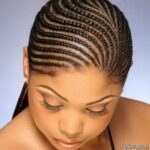HAIR CARE TIPS BY HAIR N EXTENSIONS BOUTIQUE
HOW TO SELECT OR BUY EXTENSION
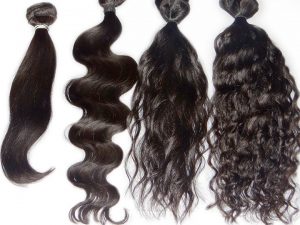 When purchasing hair extensions you want to get as close to your natural color as possible and the best quality of hair you can. Keep a close eye to the hair care tips we are going to provide you in the next lines.
When purchasing hair extensions you want to get as close to your natural color as possible and the best quality of hair you can. Keep a close eye to the hair care tips we are going to provide you in the next lines.
When selecting the color, make sure you go shopping or to the salon during the day. Comparing hair color in the natural light is the only way to ensure you get the best possible match.
Ideally, always select real human hair extensions as they will last a lot longer and look a lot more natural. quality in human hair is much better and makes styling really easy”. However, this type of extension is pricier and, actually, there are a lot of false extensions available now that look pretty damn close to the real thing, so don’t fret if money doesn’t allow it.
Take your new extensions to your hairdresser and ask them to trim your hair with them in. That way, they’ll sit better against your head. If you color your hair and have selected real hair, your stylist will be able to color the extensions too, sadly synthetic doesn’t take to dye.
HOW TO CARE FOR YOUR EXTENSION WITH SIMPLE HAIR CARE TIPS
- Brush before bed and before washing to ensure there are no natural occurring tangles caused by wind or friction.
- Do not brush wet hair as that is when hair follicles are at their most vulnerable.
- Use an. Sulfate shampoo of natural hair, natural oils, as there is no direct supply of nutrients from your scalp into the extension strands, its vital that you use a no sulfate shampoo to avoid drying the hair out.
- To avoid damaging the hair extension the cuticles and your scalp, only wash with warm water.
- Wash the hair gently in a downward motion with your palms, do not scrub or bunch the hair together as this will cause open cuticles to rub against each other causing friction.
- Rinse between each wash, and wash only 1-2 times.
- Whilst wet, add 2-3 drops of natural oil such as Almond or Coconut by gently applying it evenly over the hair, these oils will penetrate the cuticles and add moisture to hair extension.
- Natural oils do the work of most conditioners without the added chemicals and silicone, natural is always best.
- Finally, lower the shower head and rinse your hair (not scalp) with cold water, this is known as an Arctic Rinse it will close the cuticles to lock the moisture and nutrients from the oil in, leaving you with nutrient rich hair extensions.
- Let your hair air-dry at home, take 2-3 hours to wash and naturally dry your hair – Do not use heat as this will swell and dry.
- Apply a small amount of Almond or Coconut oil 2-3 times a week or when required. Argan oil is a great finishing oil for styling and frizz, however its a dry oil and does not moisturize the hair as well as Almond or Coconut.
- For long lasting hair extensions, moisturize your hair as you do your skin, it makes perfect sense.
- The simple answer is use of chemicals, heat and lack of moisture. We eat food to feed our bodies with nutrients which eventually makes their way through our system to feed our skin and hair. We cannot feed hair extensions in the same way so we need to use alternative methods.
WHY YOUR EXTENSION DRY OUT
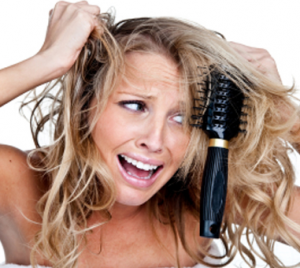 Use organic and no sulfate shampoo’s to regularly feed, moisturize and treat your hair extensions. Remember, colored hair goes through a chemical process, especially when lightened to blondes and special colors, this is unavoidable to achieve the colors we all desire.
Use organic and no sulfate shampoo’s to regularly feed, moisturize and treat your hair extensions. Remember, colored hair goes through a chemical process, especially when lightened to blondes and special colors, this is unavoidable to achieve the colors we all desire.
A little moisturizing oil (we prefer Almond) each week is key.
Avoid shampoo and conditioning products which use Sulfates, Isopropyl Alcohol, Formaldehyde and Propylene Glycol, these are strong chemicals which will strip the hair of natural oils and leave them dry and sometimes damaged if used for a prolonged period of time.
HOW TO CLEAN YOUR EXTENSION WITH SIMPLE HAIR CARE TIPS
- Wash with Care Keeping your hair and scalp clean is the best and most reliable way to ensure the longevity of your hair extensions. When they are first applied, your stylist will most likely recommend shampoos and conditioners well suited to your particular hair and skin type. Natural shampoos with tea tree oil or mint extracts can restore and moisturize your skin, reducing flakiness and irritation. Keeping your scalp free of oily buildup will keep your hair extensions looking great for longer.
- Use the Right Styling Product A good leaving condition will help keep your hair soft. Conditioners containing keratin, a natural compound your hair is formed of, will restore your natural hair and extensions.Avoid using products containing alcohol as these will dry out both your own hair and the extensions. Dry, brittle hair is more prone to split ends and breakage and is not as shiny or soft.
- Brush Regularly Good hair extension care hinges on daily brushing. Discuss with your stylist the best brush type and technique for your hair and extensions. Using a soft bristle brush and start at the bottom, detangling near the roots, and gently brush through your hair. This helps nutrients from the scalp get to the ends of your hair, maintaining an even sheen.
- Don’t Sleep with Wet Hair Sleeping in wet hair is not only uncomfortable but can also cause difficult tangles to develop. Make sure that your hair is totally dry when you go to sleep in order to prevent these tough tangles. Another good bedtime habit is to tie your hair in a ponytail before lying down to sleep. Going to bed with a low and loose ponytail will help keep your hair knot-free overnight.
- Stay Away from the Heat Personal hair dryers seem like a convenient way to get you looking great in a hurry. However, extensive exposure to heat wreaks havoc on your natural hair and extensions! Flat and curling irons and blow dryers will shorten the lifespan of your hair extensions by drying them out, making them more brittle and prone to breakage. It is always best to let your hair dry naturally.
- Protect Your Hair While Exercising When running or doing aerobic exercise, tie your hair up in a ponytail. This not only keeps your neck cool, but reduces the amount of sweat and oil buildup that will damage your extensions. It is possible to swim while wearing extensions, but avoid long exposure to chlorine and salt water. Wearing a swimming cap is the best way to ensure your extensions are protected.
- Store your Extensions Properly Hair extension care done correctly requires cleaning and detangling your extensions before storing them, which may seem obvious but is still a very important step nonetheless! Following the previous tips in this guide will help to keep your hair extensions clean and tangle free. Get an airtight container, such as a zip-top plastic bag, which will fit your extensions without folding or crumpling. Ensure that the extensions are totally clean and dry before placing them in the bags and make sure they lie flat. This prevents them from getting moldy and tangled while in storage.
- Follow your Stylist’s Advice to Keep Looking your Best Consult with your stylist before embarking on your hair extension care regimen. They can also prep your hair for new extensions, which is essential for getting the most out of your investment.
BEST HAIR PRODUCT FOR HAIR EXTENSION
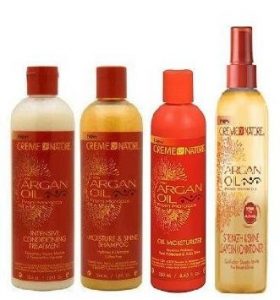
- Creme of Nature Sulfate Free Argan Oil Shampoo & Conditioner (Available in USA/Canada)
- Creme of Nature Argan Oil Perfect 7
- Clairol Herbal Essences Hello Hydration Moisturizing Conditioner
Natural Hair Care
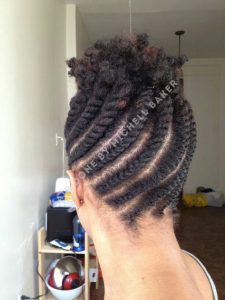
-
Naturally will take less time for oil from the scalp to reach the roots due to the nature of your tight Afro curls. require good conditioning treatments and a great cut to minimize styling time and maintain the condition of the hair.
-
Speak to your Afro-therapy stylist who will prescribe the right products for your curl type, hair length, porosity and condition.
-
Education Is Key. I love that so many women are going back to their natural hair texture. The problem is that many of them don’t know why they are doing it or how to manage their natural texture. So the first step is education, creating a relationship with this new texture, and learning how to look after your natural genetic gift.
-
Ignore misconceptions about Afro hair. One of the biggest myths out there is that Afro hair needs oil and that our hair is dry, but in reality there is a difference between oil, moisture and hydration, so just saying that our hair is dry and needs oil is not accurate.
-
Know Your Products A conditioner is different to oil and when people put conditioner on their textured curly hair they like the way it looks and feels. That’s because the moisture has worked differently to oil. Oil doesn’t activate a curl, it goes in and hydrates the scalp, it will help penetrate growth and help some of the split ends sit down but it doesn’t make your hair ultimately soft and curly.
-
Trial your products for 3 to 4 months. You have to play with products and try out different combinations to find out what works for you. Give yourself 3 to 4 months to play with it, work out how to apply it most effectively to get the best result with what you are using. Is a spray better, or a bottle of conditioner? And all of those products come in different formulations, which is best for you? I’m currently working on a platform to demystify these ingredients and help consumers figure out which will work best for them.
-
Natural hair is not one size fits all. It’s not as simple as using coconut oil or Shea butter because you’ve heard that those products work on Afro hair. When you use the Shea butter, how are you applying it? You might need to sleep with it in, whereas your friend’s hair might be softer and so it will penetrate quickly. If the oils are too heavy, maybe you need to mix some water with the oils so they separate a bit and distribute more evenly. So getting a consultation is key to seeing what works for you, because it will have a huge impact on the end result.
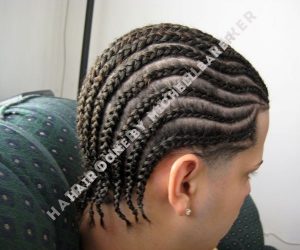
-
Be flexible when styling. You need to be in the right frame of mind to acknowledge that it might not look today how it looked yesterday. So if you are angry, don’t style your hair and if you are tired don’t style your hair. You need to be flexible too. Sometimes that means holding the hairdryer in your left hand rather than your right hand if you are not getting a good result.
-
Learn to work with your hair at home Simple things that can make all the difference: like how to wash, blow-dry, section the hair and twist it. As a stylist I know it’s not about saying I think you have 4A hair so you should use a wide toothed comb, that’s not information that’s an instruction. Instead what’s needed is demonstration, encouraging women to learn and play with their hair.
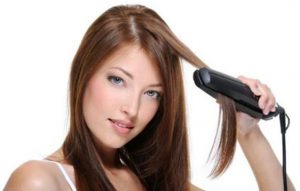
-
Ask the experts. Social media has made it even more accessible to talk about natural hair on a bigger scale, and I constantly respond to questions every day on my Instagram. I’ll talk about everything from The Big Chop, to the importance of cutting natural hair dry rather than wet so that the consumer isn’t shocked by shrinkage. I like to be accessible.
How to Maintain Your Dreadlocks as They Grow
 Maintaining dreadlocks is very different from maintaining other natural hair styles. Dreadlocks don’t need to be brushed and don’t require regular trimming. Like other natural hair styles dreadlocks need to be kept clean. Contrary to popular belief clean dreads lock up and tighten faster than dirty dreads. While other natural hair styles require combing to put stray hairs back in place, dreadlocks need to have stray hairs tucked back into the dread so they can dread up and lock with the rest of the hair. You’ll also notice that dreadlocks look better and better over time. As they continue to mature they become tighter and smoother and they require less maintenance. Your maintenance routine will vary depending on the age of your dreads and the method you used to start them. The two most popular methods for starting and maintaining dreadlocks in natural black hair are twisting/palm-rolling and latching.
Maintaining dreadlocks is very different from maintaining other natural hair styles. Dreadlocks don’t need to be brushed and don’t require regular trimming. Like other natural hair styles dreadlocks need to be kept clean. Contrary to popular belief clean dreads lock up and tighten faster than dirty dreads. While other natural hair styles require combing to put stray hairs back in place, dreadlocks need to have stray hairs tucked back into the dread so they can dread up and lock with the rest of the hair. You’ll also notice that dreadlocks look better and better over time. As they continue to mature they become tighter and smoother and they require less maintenance. Your maintenance routine will vary depending on the age of your dreads and the method you used to start them. The two most popular methods for starting and maintaining dreadlocks in natural black hair are twisting/palm-rolling and latching.
How to Maintain Dreadlocks Started with Palm-rolling
 Dreadlocks started by Palm-rolling / Twisting are delicate. The biggest concern is that the hair will un-twist before it really begins to lock. This can make the palm-rolling / twisting method pretty tedious and nerve racking. Because it’s difficult to wash the twists without them un-twisting many people avoid washing their hair and scalp for a month or even more. This leads to other complications like itching or unusual head odors. This may be the cause of many dreadlocks rumors related to washing or rather not washing dreadlocks. Two weeks or so between washing is more common. If your scalp is already comfortable with infrequent washing, maybe because it tends to be dry, and your hair is fine and highly textured, the ideal dreadlocks texture, you may find that your twists hold up pretty well, especially if you are careful with them.
Dreadlocks started by Palm-rolling / Twisting are delicate. The biggest concern is that the hair will un-twist before it really begins to lock. This can make the palm-rolling / twisting method pretty tedious and nerve racking. Because it’s difficult to wash the twists without them un-twisting many people avoid washing their hair and scalp for a month or even more. This leads to other complications like itching or unusual head odors. This may be the cause of many dreadlocks rumors related to washing or rather not washing dreadlocks. Two weeks or so between washing is more common. If your scalp is already comfortable with infrequent washing, maybe because it tends to be dry, and your hair is fine and highly textured, the ideal dreadlocks texture, you may find that your twists hold up pretty well, especially if you are careful with them.
How to Maintain Dreadlocks Started with twisting
Maintaining the twists is pretty easy, especially in-between washing. Your job is to keep them twisted. While you are driving or watching TV your hand will go exploring your head looking for dreads that are in need of twisting. Twist them at little as you notice them. You usually begin by twisting the dread around until it us under very slight tension from the twist. Then, hold it so it can not un-twist you roll it back and forth between your fingers or palms. This helps the “spirals” of the hair slide in against each other and helps the lock compress further. In textured hair types it is not difficult to over twist and damage the hair. Avoid twisting the same locks repeatedly. It’s better to leave them be than to over do it.
After Washing What?
After each washing you’ll notice the twists will feel looser. Strong healthy hair (take vitamin, eat as many raw fruits and veggies as possible) can withstand more re-twisting but if it doesn’t need to be done there is no reason to spend the time to do it. Re-twisting after every other washing is usually fine, especially if you are able to wash them carefully and not disturb the twists. One tip is to wash them while wearing a nylon stocking cap. This helps to protect the dreadlocks during washing. If you try this method take care to rinse the dreadlocks extra well since the stocking will tend to make getting all of the soap out of the dread more difficult. Re-Twisting your locks is very straight forward. For detailed information on twisting and re-twisting your locks with Natty Dread Cream check out the twisting and re-twisting section here.
You simply spin the lock until it us under enough tension to compress it while at the same time applying some dread cream directly to the dread, working it in as you twist it around and around, always to the right or “clockwise”. Finally you pin, clip, or attach the dread in some manner to hold it in this twisted position while you dry it, usually with the help of a hair dryer. Take care not to over heat the hair as it will do more harm than good. Let it dry completely and sit for at least 3 hours if possible. Then you can release or un-clip the dreads. Keep those dreadlocks residue free and reap the benefits. The tighter the locks are, the fewer stray hairs you will have and the smoother the locs will look.
Washing Products
Washing locks with the proper soaps and shampoos is essential to keeping them tight. The problem with the majority of shampoos, is that they leave residue in the hair after they are rinsed out. You can easily detect this residue by smelling the hair, or your hands, after you have used the shampoo. If the shampoo has left a scent, it has left residue behind. These residues can cause itching when they build up inside your locks. Above all, the residues act as a lubricant. This makes it very hard for the hair to lock and the locks to tighten. This is why it is highly recommended that you use only residue free soaps and shampoo’s on your dreadlocks.
Avoid residues
Residues can also cause scalp irritations. Many of the reasons our scalps are dry and itchy is because of residues. They can come from shampoos, conditioners, or chemicals. Using a residue free shampoo will get your scalp clean every time you wash it. Oils can be used in between washing to keep the scalp moisturized if dryness is an issue. It’s much better to add these oils rather that trying to include them in your shampoo. In this way you have complete control. Also you can keep your scalp happy and healthy by giving it what it wants. We are proud to offer a completely residue free dreadlocks shampoo. You’ll notice after several washing that your dreads will begin to dry faster after each washing. This is not only convenient, it also prevents troublesome mildew from growing in thicker locks.
Wearing a Head Scarf
Dreadlocks do tend to pick up lint and fuzzy’s even if they are very clean. This is usually a big problem when you are sleeping. Pillow cases and sheets that don’t shed a lot of lint will help. Wearing a head scarf on your head will keep lint and feathers out of your locs. At the same time is allowing your dreads and scalp to breathe. Head scarves also have plenty of room for longer dreads to stretch out. Also they can be bought larger so they don’t squish your dreadlocks down too much.
Washing Dreadlocks
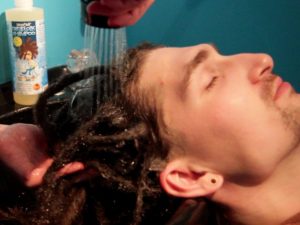 Whenever you wash your dreads get them as dry as possible afterwards. Don’t leave them covered in such a way that they can’t dry completely. It is good practice to squeeze as much water out of them by hand. This must be done before wrapping them with a dry thirsty towel for about 10 min. Finally let them air dry or drying them with a hair dryer. This will ensure that the dreadlocks dry all the way through. Leaving them wet will cause them to smell like a stinky wet towel. Nasty! Ensure shampoo residues are not permitted to build up inside your dreads and slow the drying process. Choose a residue free dreadlocks shampoo.
Whenever you wash your dreads get them as dry as possible afterwards. Don’t leave them covered in such a way that they can’t dry completely. It is good practice to squeeze as much water out of them by hand. This must be done before wrapping them with a dry thirsty towel for about 10 min. Finally let them air dry or drying them with a hair dryer. This will ensure that the dreadlocks dry all the way through. Leaving them wet will cause them to smell like a stinky wet towel. Nasty! Ensure shampoo residues are not permitted to build up inside your dreads and slow the drying process. Choose a residue free dreadlocks shampoo.
Dreadlocks Breakage
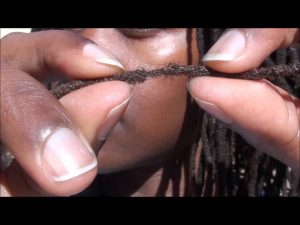 Breakage is another concern because dreadlocks can get pretty heavy as they get longer. It is possible for them to break off at the root if they are not properly moisturized. Continued use of Knatty Dread Cream keeps dreads moisturized. If you know that your hair is prone to breakage you can help by supplementing your nutrition. Furthermore if you’ve not started your dread yet you can start them a little thicker. If your dreads are thin you can keep them at a reasonable length to avoid breakage.
Breakage is another concern because dreadlocks can get pretty heavy as they get longer. It is possible for them to break off at the root if they are not properly moisturized. Continued use of Knatty Dread Cream keeps dreads moisturized. If you know that your hair is prone to breakage you can help by supplementing your nutrition. Furthermore if you’ve not started your dread yet you can start them a little thicker. If your dreads are thin you can keep them at a reasonable length to avoid breakage.
Fixing Loose Hair in the Middle of Dreadlocks
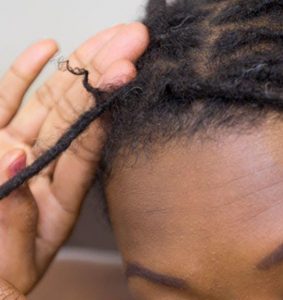
- Take the loose hair tool and push it into and down through the middle of the dreadlocks. Insert it about 2 inches from where the loose hair is.
- Thread the loose hair through the hook and flip the hook into the closed position.
- Now pull the loose hair with the tool back through the middle of the dread.
- When you are close to the spot where the tool was inserted push the tool forward and out of the dread.
- The tool will open, leaving the loose hair inside. Now just close the latch and slide the tool out.
Fixing Loose Hair at the Root of Dreadlocks
 Follow the same steps as above. The only difference is that you’ll always insert the loose hair tool into the dreadlocks about 2 inches from the roots/scalp. Also, you will slide the tool through the inside of the dread. You will continue until it pops out at the roots and gets past the other hair at the roots. That will make it easy to put the loose hair into the latch without catching any other hair unintentionally.
Follow the same steps as above. The only difference is that you’ll always insert the loose hair tool into the dreadlocks about 2 inches from the roots/scalp. Also, you will slide the tool through the inside of the dread. You will continue until it pops out at the roots and gets past the other hair at the roots. That will make it easy to put the loose hair into the latch without catching any other hair unintentionally.

